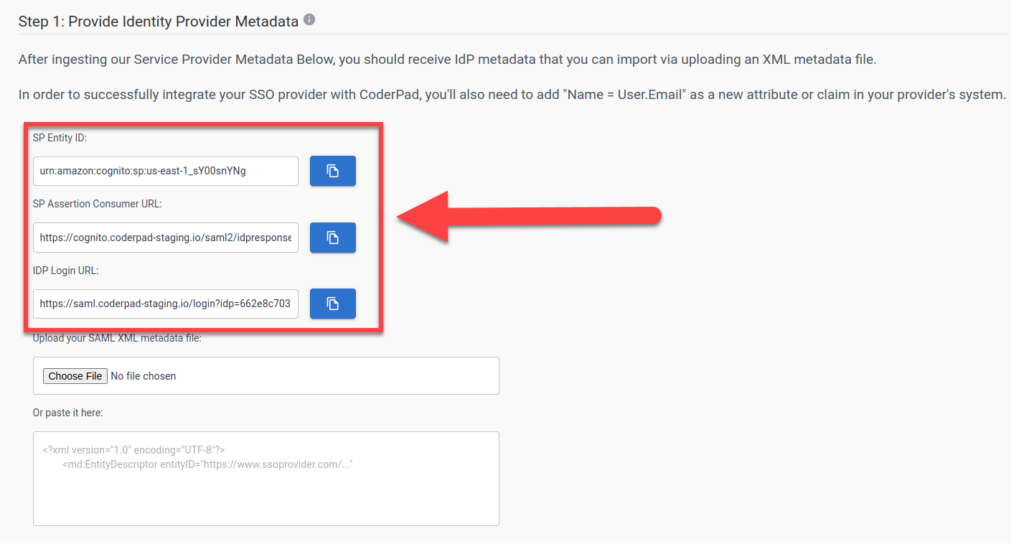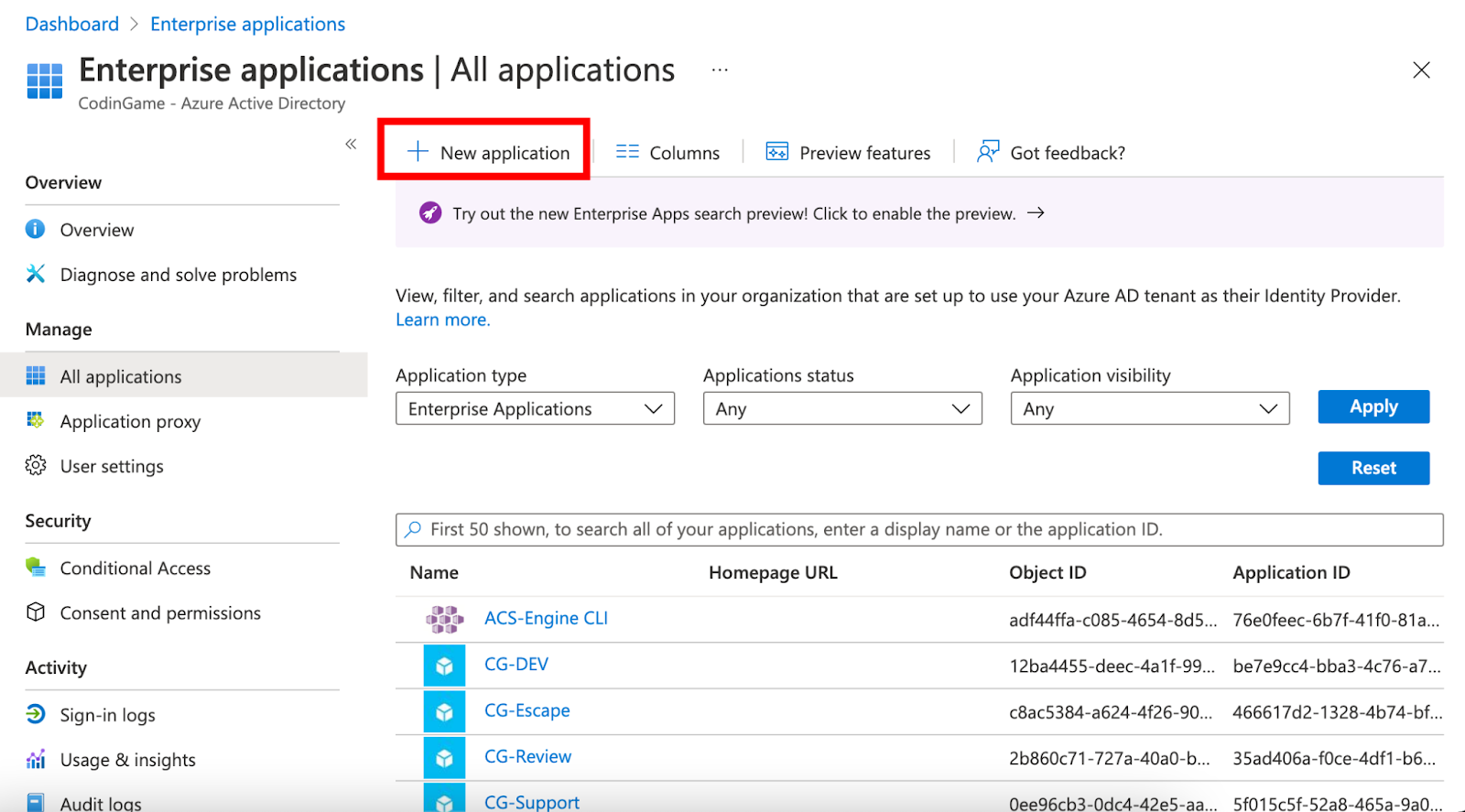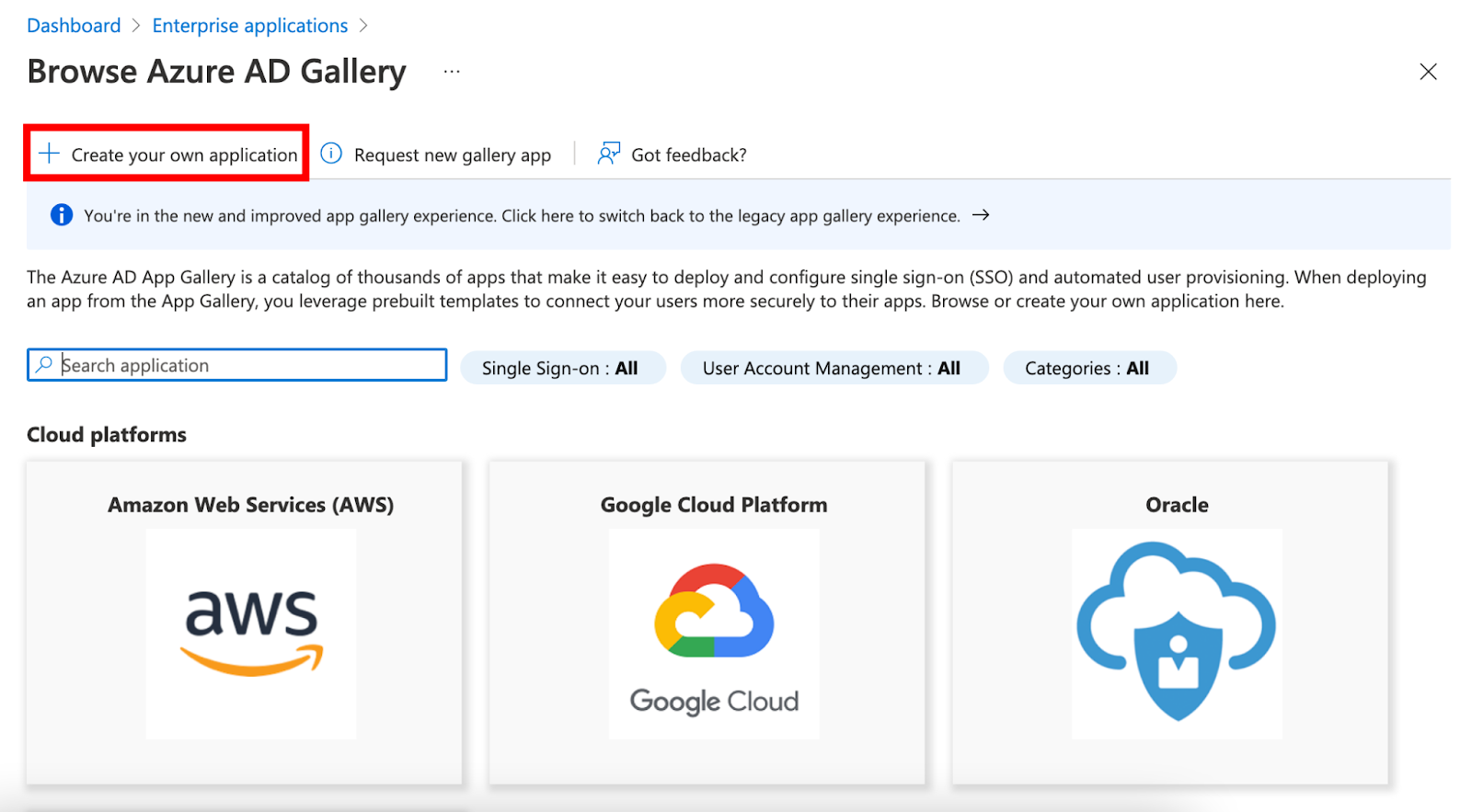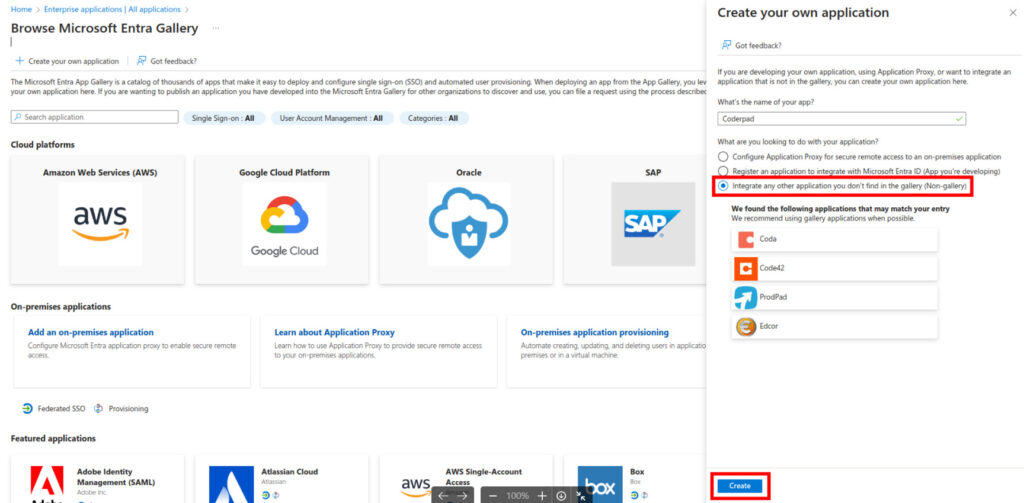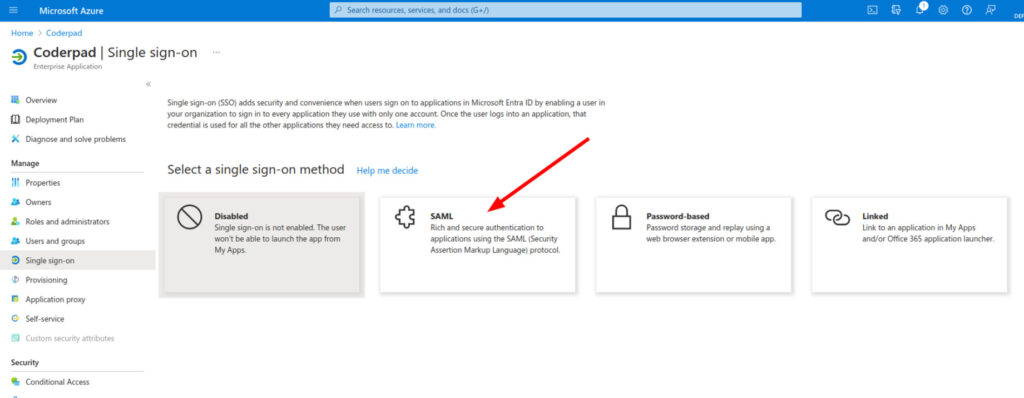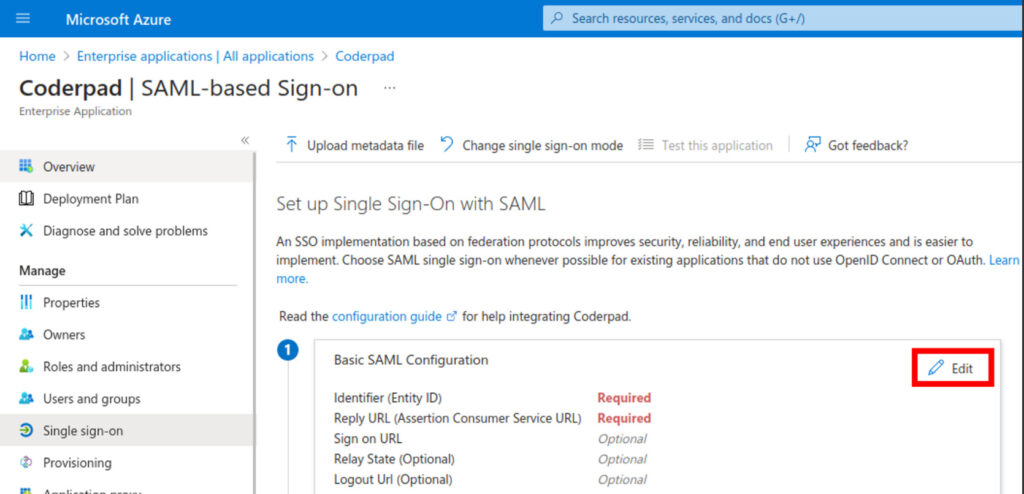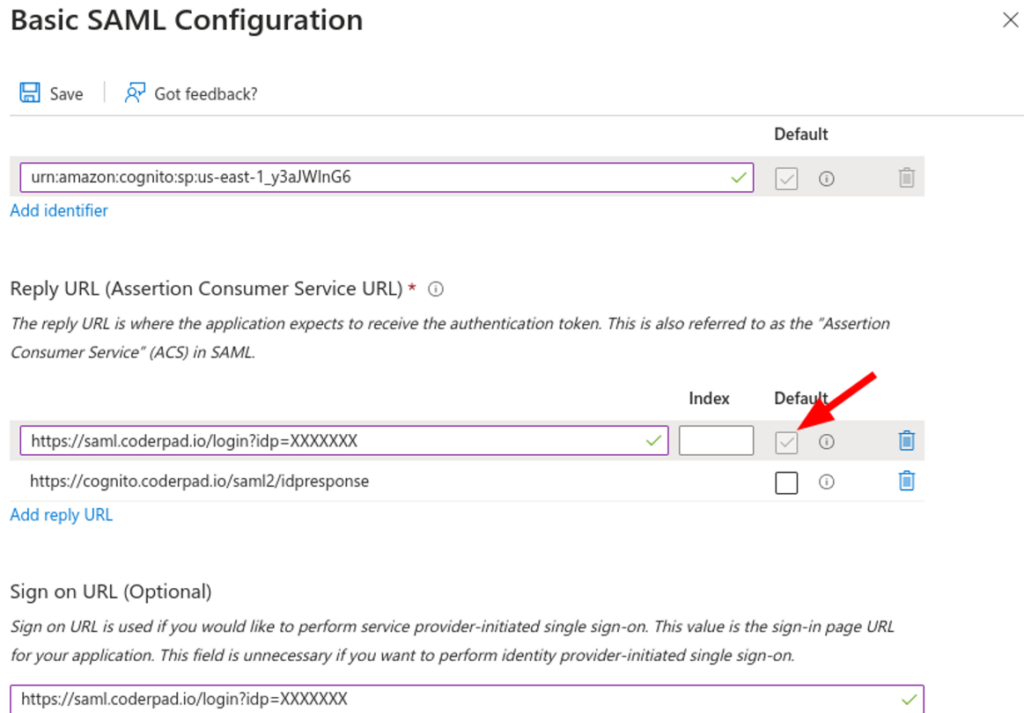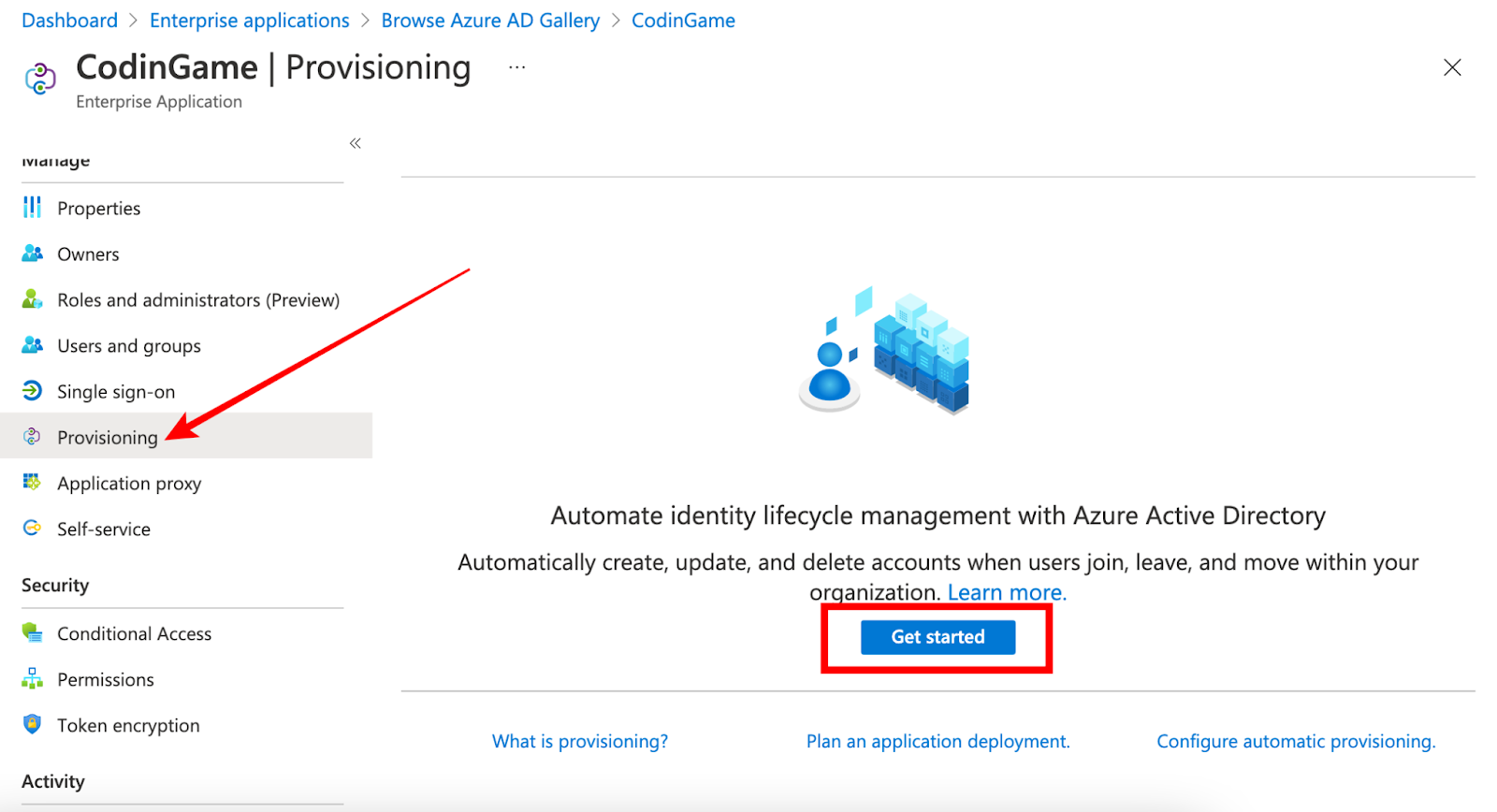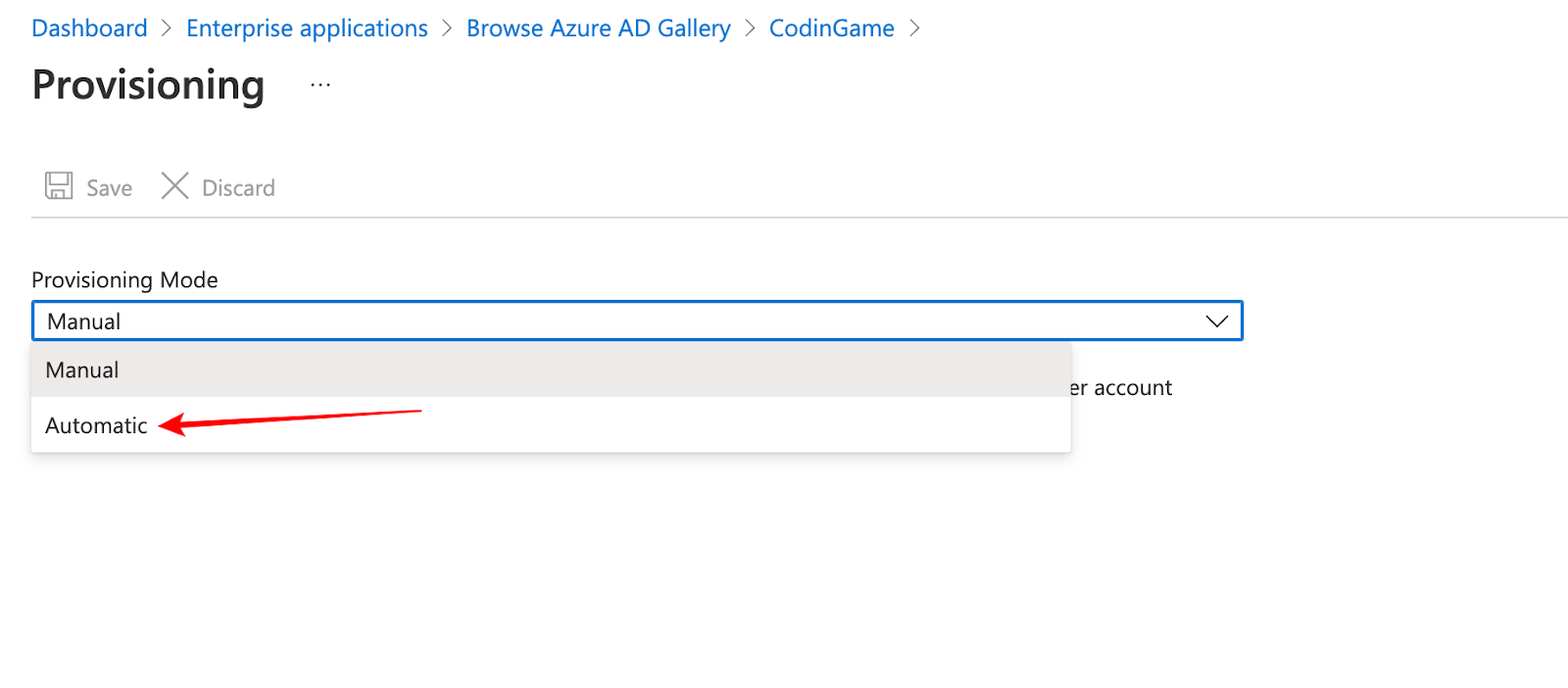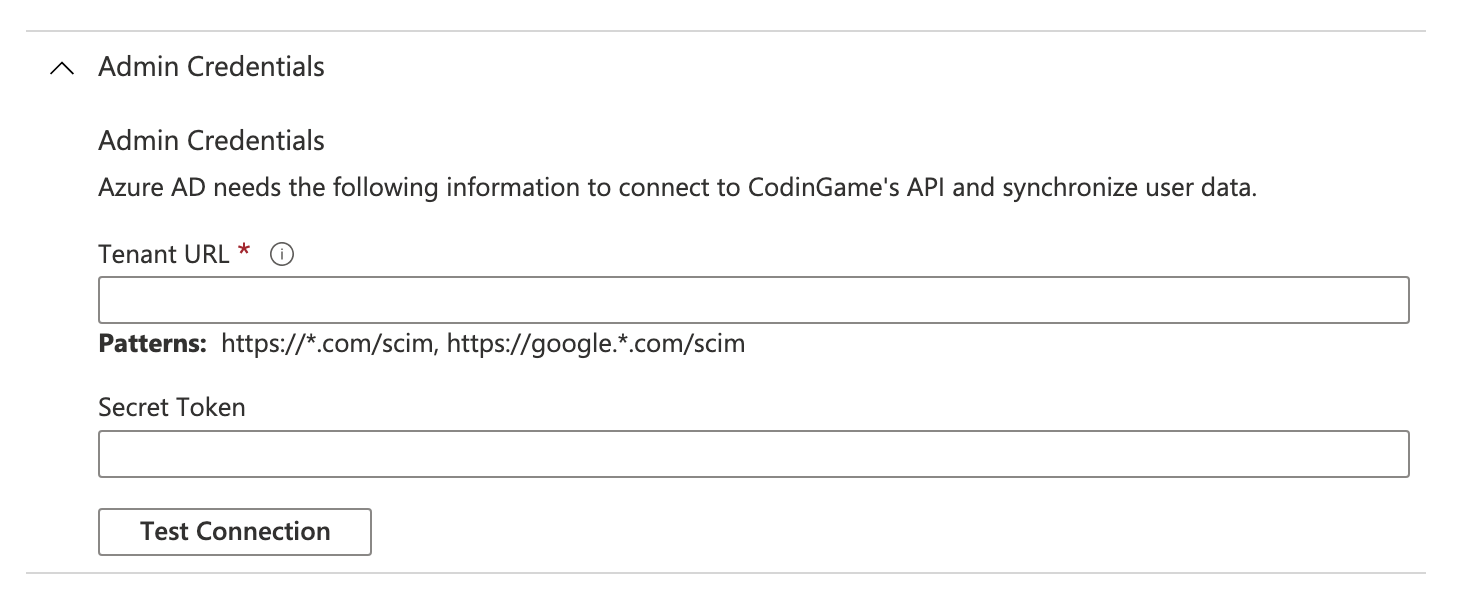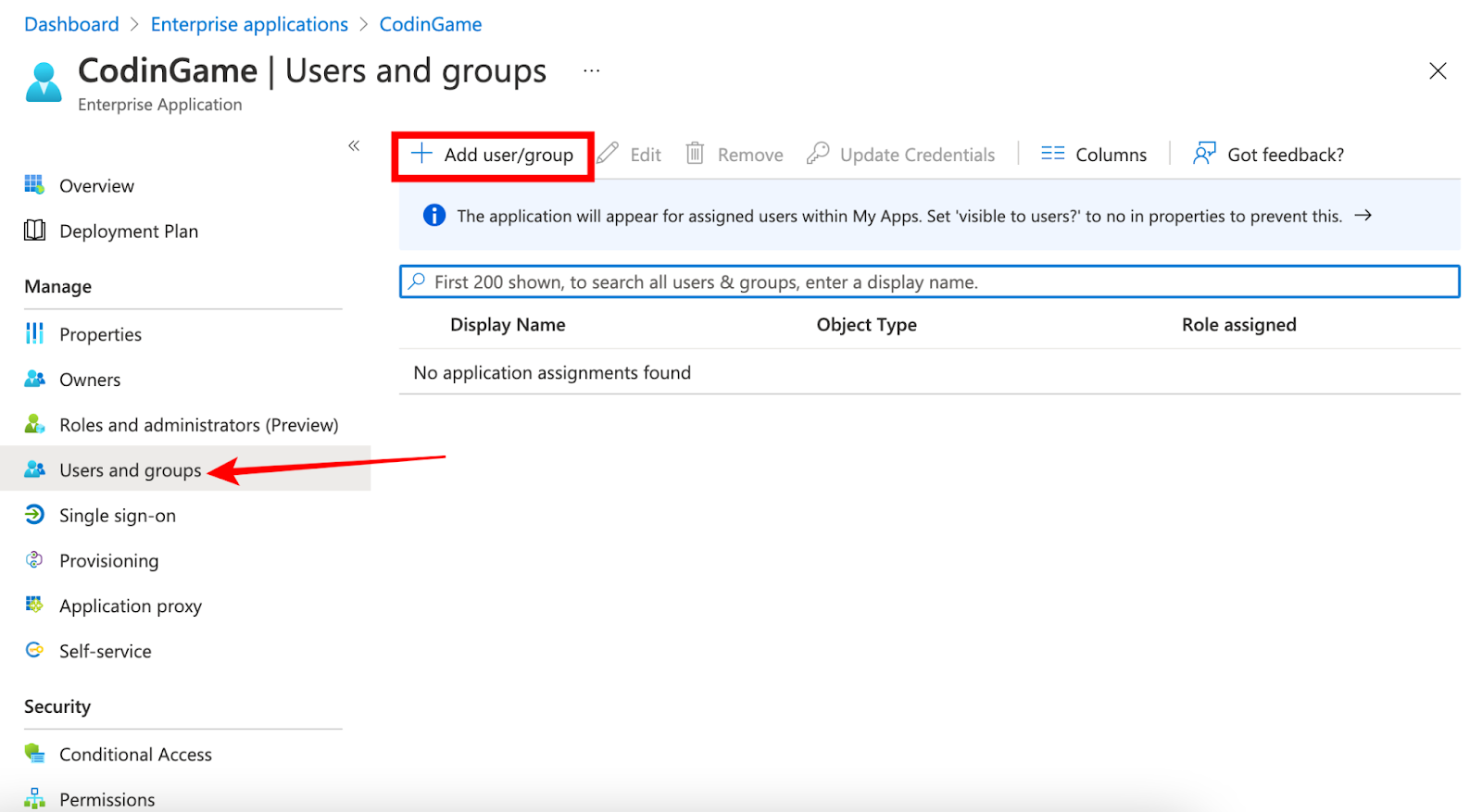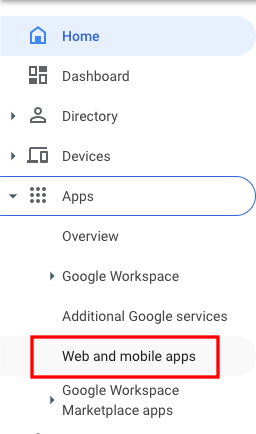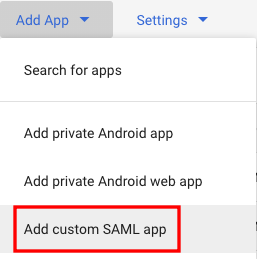SSO
Last updated on • Disponible en Français
✅ Only Enterprise plans support SSO integration. If you’d like to upgrade your plan to enable SSO, please reach out to our sales team.
CoderPad supports SSO integrations using the SAML protocol with Okta, Microsoft Azure, and Google Workspace. SSO can also be combined with User Provisioning through the SCIM protocol.
Prerequisites for activating SSO on your CoderPad account:
- You must have admin rights for your CoderPad Interview account.
- You must have identified the proper person at your end who will be able to implement the required configuration changes on your SSO provider account, i.e. your system administrator.
✅ Account-wide failure to login may occur for your users during the configuration process. Reversing the SSO activation on the account can be done at any time if the configuration fails.
ℹ️ At any time, even when the SSO configuration is active, it is possible for an admin to log into the account using email and password credentials as long as the option to enforce SSO is not active
Supported SSO features
The CoderPad Okta integration supports SP-initiated and IdP-initiated SSO logins.
It does not currently support Just-In-Time (JIT) provisioning or Single Logout.
Supported SCIM features
The following SCIM operations are supported:
- Creating users
- Updating user attributes (name, family name)
- Deactivating users
- Deprovisioning users
- Group management (Creation / Renaming / Deletion / Assign to users)
- Importing users in your Identity Provider
- Importing groups in your Identity Provider
Table of Contents
Step 1: Obtain SSO configuration values from CoderPad
To obtain the SSO values you’ll need to give to your SSO provider, you’ll first need to navigate to the Team Settings screen in CoderPad Interview by clicking on that option in the settings menu  .
.
Then, scroll down to the Single Sign-On (SSO) section and click on Configure SSO.
This will open up the SSO configuration screen. In Step 1: Provide Identity Provider Metadata you’ll see the three values you’ll need for your SSO provider:
- SP Entity ID
- SP Assertion Consumer URL (Note: You won’t need this if you’re using Okta)
- IDP Login URL
⚠️ If your CoderPad SSO screen is different than the one above and you need to make changes, please contact our support team for assistance.
Step 2: Configure SSO Provider
We currently support the following SSO providers. Click on the provider link for instructions on how set up integration with CoderPad:
Okta
1. On Your Okta Applications page, click Browse App Catalog.
2. On the App Integration Catalog page, search for CoderPad and select the one with the “SWA” label.
3. Click Add Integration.
4. In Sign-On Options, select SAML 2.0.
5. Leave the Default Relay State field empty.
6. In the Advanced Sign-on Settings, fill in the SP Entity ID, SP Assertion Consumer URL, and IDP Login URL you obtained from CoderPad. For the Application username format field, there are two options:
A) If your email addresses contain NO uppercase letters, then select Email.
B) If your user email contains any uppercases letters, CoderPad won’t be able to match the user and will result in a login error. Therefore, you have to change the Application username format to Custom, and in the value use String.toLowerCase(user.email).
7. Go to the Sign On tab, and copy the Metadata URL.
8. Paste the contents into CoderPad’s SSO configuration page.

9. You can use a custom CoderPad subdomain to test your SSO configuration.
✅If you encounter errors during login, it might be worth setting up a custom Okta integration instead of this standard one, especially if you use something else than
user.emailas user email in Okta.
Adding SCIM User Provisioning
1. After saving the SSO configuration & refreshing the page, scroll down and copy the SCIM Authentication Token.

2. Navigate back to the Okta app, go to the Provisioning tab, and click Configure API Integration.
3. Paste the SCIM Authentication Token you copied from CoderPad into the API Token field.

4. Click the Test API Credentials button to verify the credentials are correct, and then click Save.
5. Now it’s time to edit the provisioning. Navigate to Provisioning > To App and select Edit:

6. Check Create Users, Update User Attributes, Deactivate Users.

7. Click Save.
8. Go to the Push Groups tab of the App

9. Click Push groups >Find groups by name

✅It is recommended to select all groups assigned to the Okta App
10. Click Save.
11. SCIM provisioned users will automatically have user rights but not admin rights. To manage permissions through SCIM, go to Step 3: SCIM groups configuration and click on the configuration link.

12. You can configure each group from your SCIM setup page.

Groups can manage both permissions and teams (when using the team workspace feature). When you enable the “synchronize user access based on their groups” toggle, users’ access is automatically updated according to the definitions of their assigned groups.
ℹ️If a group is not configured to manage permissions, its users’ permissions will remain unchanged. Similarly, if a group is not set to manage teams, the users’ team assignments will not be affected.
A couple things to keep in mind as you’re working with SCIM:
- You can’t add or remove group names, this is done through your SCIM integration on your IDP.
- Groups are optional, users with no groups will have the normal “Member” role & admins can change their permissions afterwards.
- Users can belong to several groups.
13. From now on users added to your groups will be automatically created in CoderPad with the proper set of permissions.
✅ After you assign new users with SCIM:
- Have them connect through your company’s Okta tile first.
- They will then receive an email with a link where they will need to click to verify their email address.
- Then they will need to go to https://app.coderpad.io/login and enter their email address once to get created.
- Finally, they can click on the Coderpad tile in OKTA to actually login.
14. Proceed to Finish SSO configuration in CoderPad to finish up the SSO configuration.
Azure
1. Configure an Enterprise application in Azure AD corresponding to CoderPad by clicking Enterprise applications > + New application > + Create your own applications.
❗Do not use the Microsoft Entra SAML Toolkit application — it doesn’t allow for SCIM configuration.
2. Enter Coderpad as the name of your app, select the Integrate any other application you don’t find in the gallery (Non-gallery) option, and click Create.
3. Select Single sign-on in the left navigation menu, and then SAML card from the gallery in the center.
4. Click Edit on the Basic SAML Configuration section.
5. Enter in the following information:
- Identifier (Entity ID) = SP Entity ID
- Add 2 Reply URL (Assertion Consumer Service URL):
- IDP Login URL — make sure that the IDP Login URL Default box is checked!
- SP Assertion Consumer URL
- Sign on URL = IDP Login URL
Save the configuration. Here is what it should look like:
6. Back on the SAML-based Sign-on page, click Edit on the Attributes & Claims section, and then select +Add new claim.
Add the following in the Manage claim screen:
- Name: User.Email
- Source Attribute: user.userprincipalname
✅ We expect that this field is filled with the exact same email as the one in CoderPad. If for some reasons that’s not the case, use another field that should correspond to the email in CoderPad (case sensitive).
Leave the other fields as-is, then click Save.
7. On the SAML Certificates section, download the Federation Metadata XML file.
8. Back on the CoderPad SSO Settings page, upload or paste the file into the respective input box.
9. Test the configuration: Ask one of your users to login through SSO to check that it is working before proceeding to the user provisioning steps.
Adding SCIM User Provisioning
Once SSO has been activated, User Provisioning can be turned on using the SCIM protocol:
1. From the Azure AD application, select Provisioning and then Get started:
2. Select Automatic provisioning mode
3. Add the following parameters:
- Tenant URL = SCIM URL
- Secret Token = SCIM Authentication Token
4. The Test Connection action should be working correctly at this point.
5. Edit the provisioning Mappings:
- For Provision Azure Active Directory Groups, keep the default values:
- Enabled: Yes
- Target Object Actions: Create, Update, Delete
- Attribute Mappings: displayName, members
- For Provision Azure Active Directory Users, update the Attribute Mappings:
- Enabled: Yes
- Target Object Actions: Create, Update, Delete
- Attribute Mappings:
- userPrincipalName = userName (i.e. the login email)
- Switch([IsSoftDeleted]…) = active
- givenName = name.givenName
- surname = name.familyName
❗Make sure you clear the user attribute mapping before you update it. Any mapping with [type eq…] — i.e.
addresses[type eq "work"].country— will make the SSO crash. The library we use doesn’t support payloads that include any value selection filters (like [type eq….]), so you will need to ensure they are removed.
6. Add users and groups to the application:
- Users added directly will be created with no permissions on your CoderPad Account
- Groups allow to define a common set of permissions automatically set on the users of that group
7. From the provisioning menu:
- Start the provisioning
- Refresh & wait for “Current cycle status: Initial cycle completed”
8. SCIM provisioned users will automatically have user rights but not admin rights. To manage permissions through SCIM, go to Step 3: SCIM groups configuration and click on the configuration link.

9. On this screen you can configure each group from your SCIM setup page.

Groups can manage both permissions and teams (when using the team workspace feature). When you enable the “synchronize user access based on their groups” toggle, users’ access is automatically updated according to the definitions of their assigned groups.
ℹ️If a group is not configured to manage permissions, its users’ permissions will remain unchanged. Similarly, if a group is not set to manage teams, the users’ team assignments will not be affected.
A couple things to keep in mind as you’re working with SCIM:
- You can’t add or remove group names, this is done through your SCIM integration on your IDP.
- Groups are optional, users with no groups will have the normal “Member” role & admins can change their permissions afterwards.
- Users can belong to several groups.
10. From now on users added to your groups will be automatically created in CoderPad with the proper set of permissions.
✅ After you assign new users with SCIM:
- Have them connect through your company’s Azure tile first.
- They will then receive an email with a link where they will need to click to verify their email address.
- Then they will need to go to https://app.coderpad.io/login and enter their email address once to get created.
- Finally, they can click on the Coderpad tile in Azure to actually login.
11. Proceed to Finish SSO configuration in CoderPad to finish up the SSO configuration.
Google Workspace
⚠️ Make sure your SAML certificates are up-to-date with Google! Expired certificates can cause you to be locked out of CoderPad.
1. Configure an “App” in Google Workspace corresponding to CoderPad : Admin > Apps > Web and mobile apps > Add App > Add custom SAML app
- Copy and send the following parameters to the CoderPad support team:
- SSO URL
- Entity ID
- Certificate
- Click Continue and enter the following configuration in the Service provider details panel:
- ACS URL = SP Assertion Consumer URL
- Entity ID = SP Entity ID
- Leave the other fields unchanged
- Click Continue and on the Attributes panel, click the ADD MAPPING button:
- For the Google Directory attributes, select Primary email
- For the App attributes, type User.Email
2. Click Finish
3. Expand the User access panel of the newly created app and activate the service by selecting the ON for everyone option.
4. For testing purposes, add the Google Workspace admin user used to configure SSO as a user of your CoderPad account.
5. Contact CoderPad support to schedule a real-time meeting between one of our engineers and your system administrator. During the meeting, CoderPad will activate SSO on your account, and you may then check that the Google Workspace admin user can indeed connect to CoderPad through SSO. Any final adjustments can be made during this call. As an alternative to a real-time meeting, you may just request activation of SSO by contacting support.
6. From now on, any user added to both the Google Workspace and the CoderPad account will be authenticated through Google Workspace.
7. Proceed to Finish SSO configuration in CoderPad to finish up the SSO configuration.
Finish SSO configuration in CoderPad
SSO Login Subdomain
Now that you’ve configured your IdP information, you’re able to customize your SSO login subdomain. This will give you a dedicated sign in page specifically for your organization.
You should direct your users to use this subdomain for login; they’ll be greeted with a welcoming login screen specifically for SSO users to reduce confusion.
However, if one of your users accidentally attempts to login through other CoderPad pages – such as our homepage login button – we’ll redirect them to the correct location upon email input.
Mandatory SSO Enforcement
While we allow organizations to have both SSO and more traditional email/password user accounts, we recommend you enforce SSO login.

The benefits of doing this are:
- Simplification of organization-wide authentication
- Reduced/simplified IT support requests
- Ability to add security precautions (such as 2FA)
To make SSO mandatory, simply select the Enforce SSO checkbox in the step 4 section.


